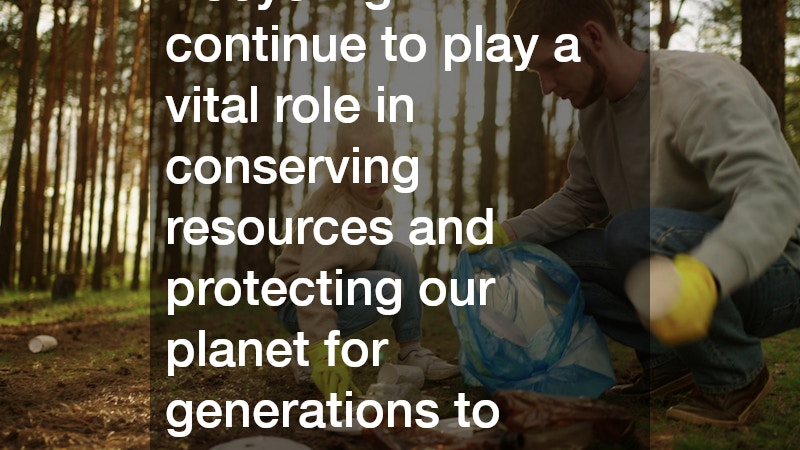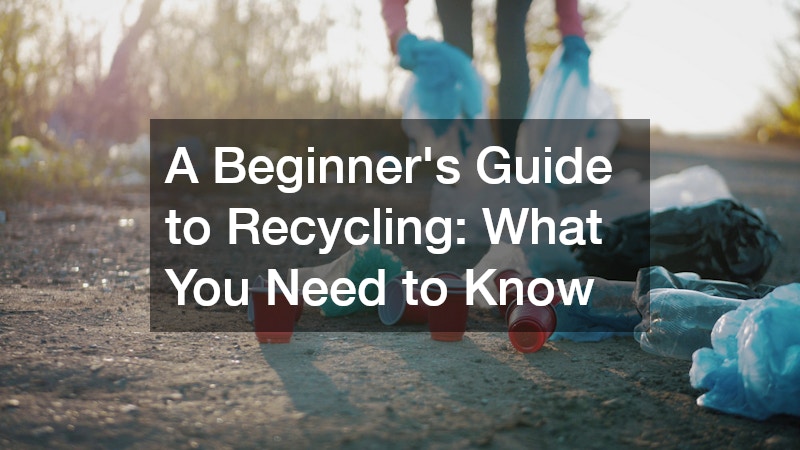A Beginners Guide to Recycling What You Need to Know
In an age where sustainability has become a global concern, more Australians are recognising the importance of recycling. This environmentally responsible practice plays a crucial role in reducing waste, conserving natural resources and lowering greenhouse gas emissions.
However, for beginners, the process can sometimes feel overwhelming. Knowing what materials can be recycled, how to prepare them, and what common mistakes to avoid can make a significant difference in your efforts. This guide provides an accessible introduction to recycling, helping you form habits that benefit both your household and the planet.
Understanding What Can Be Recycled
The first step in successful recycling is knowing which materials are accepted by your local council. While the specifics may vary slightly depending on where you live in Australia, most curbside programs accept paper, cardboard, hard plastics, aluminium, and glass containers. Items such as newspapers, cereal boxes, milk cartons, and soft drink cans are all typically suitable for your yellow-lid recycling bin.
Contamination is a major issue in recycling, and it often occurs when incorrect items are placed in the bin. Items like plastic bags, greasy pizza boxes, and broken glassware can compromise an entire load of recyclables. It is essential to clean and dry items before placing them in the bin—residue from food or liquids can attract pests and cause materials to be sent to landfill instead. Additionally, lids from bottles and jars should be removed unless your local service specifies otherwise.
Another key point for beginners is to separate recyclable materials correctly. For instance, paper should not be mixed with wet or greasy substances, as it becomes unrecyclable when soiled. By staying informed about what can and cannot be recycled, you contribute to a more efficient system and reduce the likelihood of recyclable items ending up in landfills.
Learning the Importance of Recycling Habits
Recycling is not just about sorting waste correctly—it’s about building a routine that fits seamlessly into daily life. By setting up a clear system in your home, such as placing bins in accessible locations and labelling them clearly, you’ll be more likely to stick with the habit. Taking a few extra moments to rinse a container or flatten a cardboard box might not seem significant on its own, but these small actions collectively help reduce the volume of waste and improve the quality of recyclables processed by facilities.
One of the most effective ways to encourage recycling in your household is through education. Talk to your children about the value of reducing waste and explain how their choices impact the environment. Schools across Australia often support these efforts through environmental education programs, which reinforce the message that sustainability is a shared responsibility.
It’s also worth exploring beyond the household bin. Many supermarkets and retail outlets offer specialised recycling programs for items such as soft plastics, batteries, and printer cartridges. While these materials may not be accepted in your curbside bin, dedicated drop-off locations ensure they are processed responsibly. Becoming familiar with these programs adds depth to your recycling efforts and helps divert items from the landfill that are often overlooked.
Avoiding Common Mistakes and Looking Ahead
Even with the best intentions, it’s easy to make mistakes when recycling. One of the most common errors is ‘wishcycling’—placing an item in the recycling bin in the hope that it can be processed, even if you’re unsure of its recyclability. While well-meaning, this practice causes significant disruptions to the recycling stream. Items like textiles, disposable coffee cups, and take-away containers with plastic linings may appear recyclable but often are not. When in doubt, it’s better to check with your local council’s recycling guide rather than risk contaminating the bin.
Another frequent issue is failing to check for changes in local guidelines. Recycling programs are continually evolving, with new technologies and policies influencing what can and cannot be processed. Staying informed through council websites or local sustainability groups ensures your efforts remain aligned with best practices. It also allows you to participate in new initiatives as they become available.
Looking to the future, recycling is just one component of a broader approach to sustainable living. Reducing consumption and reusing materials where possible are equally important. By adopting a more circular mindset—where waste is minimised and materials are kept in use for as long as possible—you can make a more profound environmental impact. Recycling is a gateway to this mindset and an excellent starting point for anyone new to sustainable practices.
In summary, recycling is an essential practice for any Australian household aiming to reduce its environmental footprint. By understanding what materials can be recycled, establishing strong habits, and avoiding common mistakes, beginners can contribute meaningfully to a more sustainable future. As awareness and technology improve, recycling will continue to play a vital role in conserving resources and protecting our planet for generations to come.





Post Comment